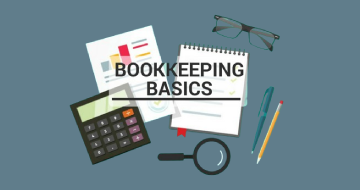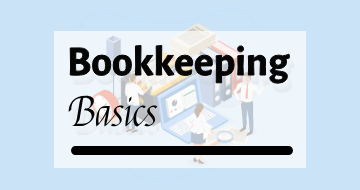Bookkeeping Basics by Coursera
Course Highlights
- Define accounting and the concepts of accounting measurement.
- Explain the role of a bookkeeper and common bookkeeping tasks and responsibilities.
- Summarize the double entry accounting method.
- Explain the ethical and social responsibilities of bookkeepers in ensuring the integrity of financial information.
Skills you will learn!
Curriculum
38 Topics
Welcome to Intuit's Bookkeeping Certification Program
Welcome to Course 1: Bookkeeping Basics
Meet Your Learning Guide
Introduction to Accounting
Our Schedule
Introduction to the Bookkeeper Role and Learning Objectives
How Does a Bookkeeper Contribute to Clients' success?
Commercial Break: Career Readiness Resource
Commercial Break: Expert Advice
Lesson Summary and Wrap-Up
Introduction and Learning Objectives
The Accounting Principle
Accounting Equation Summary
Next on Bookkeeper Rescue
Double Entry Accounting Introduction and Overview
Double Entry Accounting
Account Types
Recapping Journal Entries
A Pro's Perspective on Debits and Credits
Welcome Reading Bookkeeping Basics
Four Key Elements of Bookkeeping Ethics
Understanding Accounting Terminology
Accounting Concepts and Measurement Assessment
Welcome Practice Quiz
Role of a Bookkeeper Practice Quiz
Accounting Equation Practice Quiz
Double-Entry Accounting Practice Quiz
Meet and Greet
Reflect on Your Goals
Research Activity: Types of Businesses You Could Work For
Reflection: How would you respond?
Role of Bookkeeper Discussion
End of The Accounting Equation Discussion
Professional Certificate Entry Survey
Lou's Dilemma: Ethical and Social Responsibilities of a Bookkeeper
The Accounting Equation
You Try It: The Accounting Equation in Action
You Try It: Use a T-Chart
29 Topics
Introduction to Working with the General Journal and General Ledger (Part 1)
Chart of Accounts
General Ledger Summary
Introduction to Working with the General Journal and General Ledger (Part 2)
Overview of Accounting Software
Transaction Examples
Creating a Journal
Running Reports
Introducing the Accounting Cycle
Step 1 - Collect and Analyze Transactions
Step 2 - Posting Transactions to the General Ledger
Step 3 - Preparing an Unadjusted Trial Balance
Step 4 - Preparing Adjusting Entries at the End of a Period
Step 5: Preparing an Adjusted Trial Balance
Accounting Cycle (Part 1) Assessment
General Ledger Practice Quiz
Journal Entries Practice Quiz
Accounting Cycle Practice Quiz
Details Details Details
Reflecting on the General Ledger
Accounting Cycle
You Try It: Posting to the General Ledger
You Try It: Calculate Account Balance
You Try It: Review a Chart of Accounts
You Try It: Create a Journal Entry
You Try It: Analyzing Transactions
You Try It: Create an Unadjusted Trial Balance
Step 6: Preparing Financial Statements
You Try It: Match The Accounting Cycle
39 Topics
Introduction Learning Objectives
Sales Receipts
Sales Receipt vs Invoice
Lou Received a Check - Entering a Bank Deposit
Lou Writes a Check - Paying a Check to a Vendor
Lou Gives a Credit
Processing Transactions with QuickBooks Online Summary
Intro and Objectives
Expert Advice: Adjusting Entries
Creating an Adjusted Trial Balance
Financial Statements and Closing the Books
Expert Advice: Closing the Books
Introduction and Balance Sheet Overview
QuickBooks Online Demo: The Balance Sheet
How to Read a Balance Sheet
Income Statement Overview
QuickBooks Online Demo: The Profit and Loss Statement
Expert Advice: Explaining the Income Statement to a Client
Statement of Equity Overview
Cash Flow Statement Overview
How These Statements Work Together
Wrapping Up with Lou
Accounting Cycle (Part 2) Assessment
Transactions Practice Quiz
Adjustments Practice Quiz
Four Core Financial Statements Practice Quiz
What would you say to Lou?
Reflect on Your Learning
Sales Receipt Practice
Entering Deposits Simulation
Vendor Checks Simulation
Credit Memo Simulation
Preparing Adjusting Entries
You Try It: Create an Adjusted Trial Balance
Create Lou's Balance Sheet
How to Use an Income Statement
You Try It: Read the Income Statement
You Try It: Fill in the Statement of Equity
You Try It: Analyze the Statement of Cash Flow
29 Topics
You're Invited to Bianca's Bookkeeping Bootcamp!
Bootcamp Welcome
Introduction to Key Assumptions of Accounting and Reporting
Expert Advice on Key Assumptions
Job Readiness Commercial
Introduction to the Periodicity Assumption and Learning Objectives
Overview of the Periodicity Assumptions and Its Significance
Overview of the Revenue Recognition Principle and Example
Overview of the Matching Principle and Example
Lesson Summary and Wrap
Introduction and Objectives
Cash-Basis Accounting
Accrual Method of Accounting
Hybrid Accounting
Accounting Methods in QuickBooks Online
Lesson Summary and Wrap
Bookkeeping Basics Case Study
Take the Intuit Academy Bookkeeping exam
Bookkeeping Basics Case Study Quiz
Key Assumptions Part 1 Practice Quiz
Key Assumptions Part 2 Practice Quiz
Periodicity Assumption Practice Quiz
Accrual vs Cash-Basis Practice Quiz
Discussing Key Assumptions
Key Assumptions Discussion
Reflect on the Periodicity Assumption
Reflect on Accounting Methods
Key Assumptions of Financial Accounting and Reporting (Part 1)
More Key Assumptions

Bookkeeping Basics









